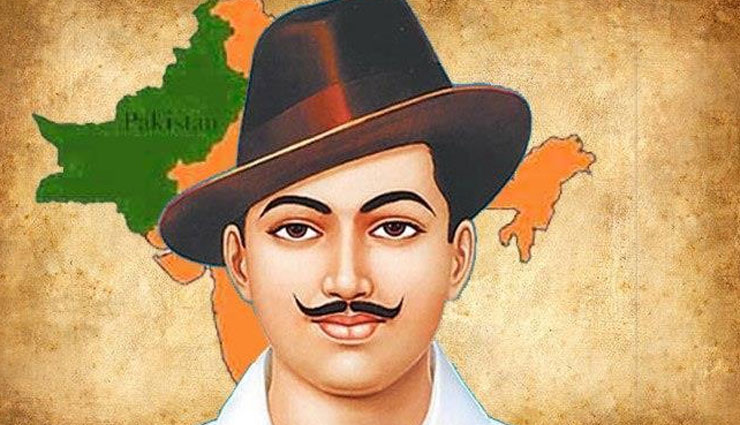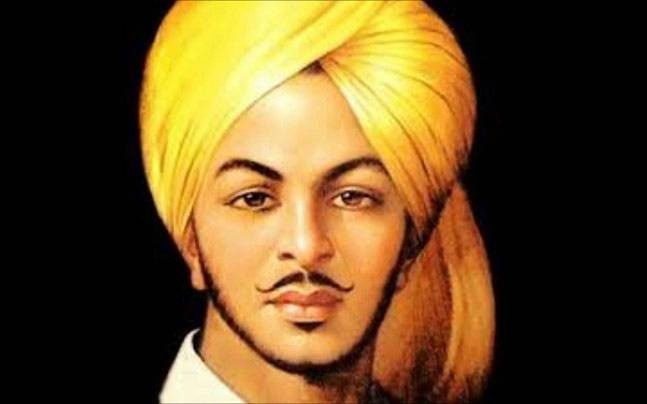10 Facts About Bhagat Singh Who Ascended The Gallows Laughing
By: Priyanka Maheshwari Wed, 26 Sept 2018 12:07:14

It is easy to kill individuals but you cannot kill the ideas. Great empires crumbled while the ideas survived..
- Bhagat Singh
This quote was written on the leaflets Bhagat Singh threw at the Central Assembly on April 8, 1929. Since then, it has been quoted several times over by revolutionaries. The legendary revolutionary died for the country when he was only 24 years old but his inspiring actions continued to stir the desire for freedom.
Bhagat Singh was born on September 28, 1907, and was hanged an hour ahead of the official time on March 23, 1931.
* Bhagat Singh, a Sandhu Jat, was born in September 1907 to a Sikh family in Banga village, Jaranwala Tehsil in the Lyallpur district of the Punjab Province of British India (now in Pakistan). His family had earlier been involved in revolutionary activities against the British rule in the country
* As a child, Bhagat Singh often spoke about growing guns in the fields to fight the British
* When Bhagat Singh was only 12 years old, he bunked school to visit the site of the Jallianwala Bagh massacre just hours after thousands of unarmed people had been killed.
* When Bhagat was only 14, he took part in a protest against the killing of a large number of unarmed people at Gurudwara Nankana Sahib.

* He was a great actor in college time and acted in several plays like Rana Pratap, Samrat Chandragupta and Bharat Durdasha. During the independence movement, Singh had for some time been exploiting the power of drama as a means to inspire a revolt against the British, purchasing a magic lantern to show slides that enlivened his talks about revolutionaries who had died as a result of the Kakori Conspiracy, such as Ram Prasad Bismil. In 1929, he proposed a dramatic act to the Hindustan Socialist Republican Association (HSRA) with the intention of gaining massive publicity for their aims
* Bhagat Singh never liked Gandhi's philosophy of non-violence. After the 1922 Chauri Chaura incident, Singh joined the Young Revolutionary Movement and began to advocate for the violent overthrow of the British Government in India
* To avoid an arranged marriage, Singh ran away to Kanpur leaving a letter behind that read "My life has been dedicated to the noblest cause, that of the freedom of the country. Therefore, there is no rest or worldly desire that can lure me now."
* Singh was arrested on the false pretext of having been involved in a bombing when the British police became aware of Singh's influence on youth
* Singh began to question religious ideologies after witnessing the Hindu-Muslim riots that broke out after Gandhi disbanded the Non-Cooperation Movement. He did not understand how members of these two groups, initially united in fighting against the British, could be at each other's throats because of their religious differences. At this point, Singh dropped his religious beliefs, since he believed religion hindered the revolutionaries' struggle for independence and began studying the works of Bakunin, Lenin, Trotsky - all atheist revolutionaries. Singh also wrote an essay titled 'Why I am an Atheist' in 1930 in Lahore Central Jail.
* Singh was a great writer. He wrote for and edited Urdu and Punjabi newspapers, published from Amritsar, as well as contributed to low-priced pamphlets published by the Naujawan Bharat Sabha that excoriated the British. In 1923, during his college time, Singh won an essay competition set by the Punjab Hindi Sahitya Sammelan, writing on the problems in Punjab. He also wrote briefly for the Veer Arjun newspaper, published in Delhi and for Kirti, the journal of the Kirti Kisan Party. From May to September 1928, Singh published a series of articles on anarchism in Kirti. He often used pseudonyms such as Balwant, Ranjit and Vidhrohi for publishing his writings.





